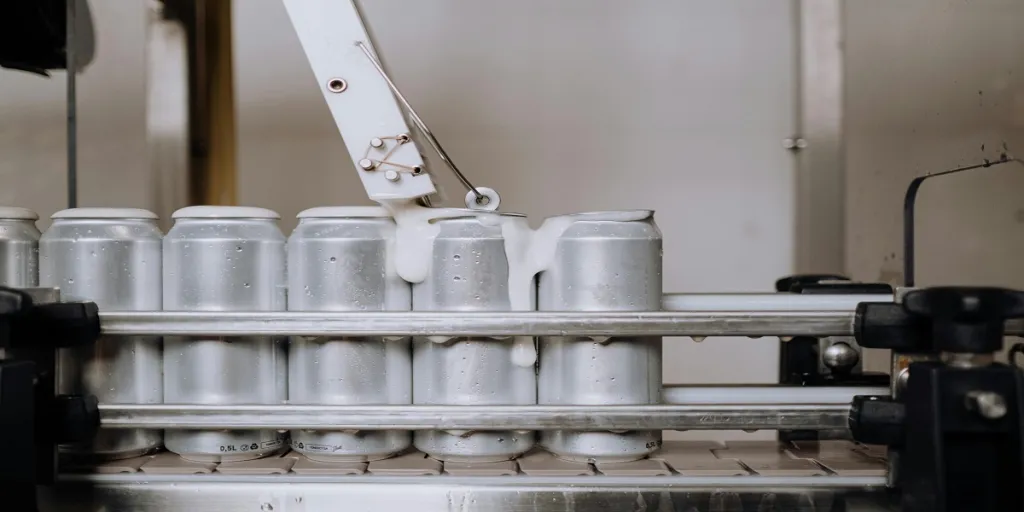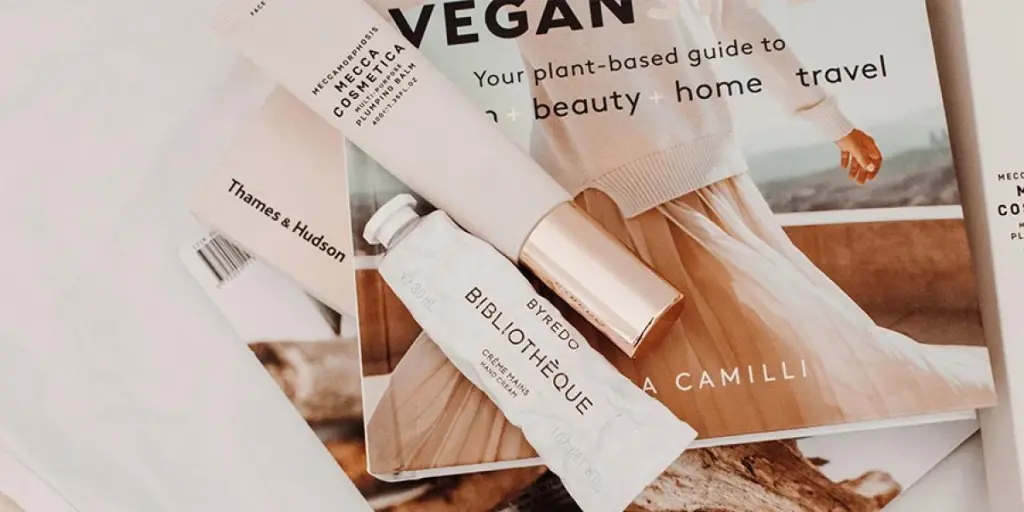As the packaging industry faces growing pressure to adopt sustainable practices, plastic wrap – once a go-to solution – is now under scrutiny.

Plastic wrap has been a staple in packaging for decades, offering durability, flexibility, and a high level of product protection.
But as environmental awareness grows, the packaging industry is re-evaluating the role of plastic wrap, considering its environmental footprint and exploring alternative materials.
This shift is reshaping not only packaging practices but also how companies align with sustainability goals.
In this article, we examine why plastic wrap is under scrutiny, assess emerging alternatives, and discuss what the future of plastic wrap might hold for the packaging industry.
The environmental impact of plastic Wrap
Plastic wrap, often made from low-density polyethylene (LDPE), has traditionally been favoured for its versatility and barrier properties, which prevent moisture and air from damaging products.
While these qualities make plastic wrap ideal for protecting goods, LDPE and similar materials are challenging to recycle and contribute to the accumulation of plastic waste in landfills and oceans.
Statistics underscore the environmental challenge. It is estimated that plastic packaging accounts for nearly 40% of global plastic demand, with a significant portion of this waste not being recycled. In the UK, for instance, packaging materials, including plastic wrap, comprise a major part of the 2.2 million tonnes of plastic waste produced annually.
As only a fraction of this waste is effectively recycled, much of it ultimately adds to pollution.
The durability of plastic, while beneficial in packaging, becomes a problem post-use, as these materials can persist in the environment for hundreds of years.
For businesses and consumers alike, the demand for more sustainable packaging solutions has become a driving factor for change, putting pressure on the packaging industry to innovate and reduce its reliance on traditional plastic wrap.
Emerging alternatives: redefining wrapping materials
In response to environmental concerns, companies are exploring innovative alternatives to conventional plastic wrap, aiming to reduce the environmental impact while maintaining essential protective qualities. Here are a few alternatives gaining traction in the packaging sector:
- Biodegradable films: Unlike traditional plastic, biodegradable films break down naturally, often using plant-based materials like polylactic acid (PLA) derived from corn starch or sugarcane. These films decompose more quickly than standard plastics and offer similar strength and flexibility. However, challenges remain, such as the need for specific conditions for decomposition and the limited infrastructure to process these materials effectively.
- Compostable wraps: Made from natural materials such as cellulose, compostable wraps can decompose entirely in a composting environment. Many brands are now developing compostable packaging that can break down safely without releasing harmful residues. The shift to compostable wraps offers a solution with minimal environmental impact, but questions around durability and the cost of scaling production still need to be addressed.
- Recyclable multi-layer films: Some manufacturers are rethinking plastic wrap by developing recyclable multi-layer films, which blend various polymers to create a wrap that can still be recycled after use. These advanced films provide the same benefits as traditional plastic wrap but have a reduced environmental footprint, as they can be recycled through appropriate systems.
- Reusable wrap solutions: Some companies are experimenting with reusable wrapping materials, especially for larger items in industrial packaging. Materials such as woven polypropylene offer durability and can be reused multiple times before disposal, thus reducing waste significantly. While not a solution for all packaging, reusables are gaining traction in areas where products require robust protection for longer periods.
As these alternatives continue to evolve, they present viable ways for brands to minimise environmental impact while still meeting industry demands for protection and quality.
However, widespread adoption will depend on balancing cost-effectiveness, performance, and the development of recycling and composting infrastructure.
Challenges in implementing sustainable solutions
Despite the promise of these alternatives, the packaging industry faces several hurdles when shifting away from traditional plastic wrap. Cost remains a key concern, as many sustainable materials are still more expensive to produce than conventional plastics.
For businesses, particularly small to medium-sized enterprises, the price difference can be a barrier to adoption.
Performance limitations are another issue. Some eco-friendly wraps do not provide the same level of moisture or air barrier protection as LDPE plastic wrap.
This can be especially problematic for food and pharmaceutical packaging, where product integrity is paramount. While advances in material science are helping to bridge these gaps, compromises in durability, flexibility, and product lifespan continue to pose challenges.
Consumer perception also plays a role. Shoppers increasingly seek sustainable packaging, yet some are sceptical of biodegradable and compostable options due to confusion around disposal and recycling processes.
For example, not all biodegradable plastics can be composted at home, and many require industrial composting facilities that may not be widely available. Educating consumers on the correct disposal methods is essential to ensuring these materials do not inadvertently contribute to waste.
Finally, infrastructure is a critical barrier. The availability of composting facilities, for instance, significantly influences the effectiveness of compostable wraps.
Without proper recycling and composting systems in place, even sustainable materials may end up in landfill, where they lose their intended environmental benefits. Investments in recycling and composting infrastructure are thus essential to achieving truly sustainable packaging solutions.
The road ahead for plastic wrap in packaging
As the demand for eco-friendly solutions grows, the future of plastic wrap will likely involve a mix of traditional materials used more responsibly, alongside sustainable alternatives.
For companies, moving towards sustainable options is not only a matter of regulatory compliance but also a way to build consumer trust and brand loyalty.
Some industry leaders are already adopting a circular approach, incorporating more recyclable materials and investing in closed-loop systems where packaging is designed to be reused or reprocessed after use.
Legislation will also play a significant role in shaping the future of plastic wrap. Governments worldwide are implementing stricter regulations on plastic usage and waste.
In the UK, the Plastic Packaging Tax introduced in April 2022 imposes a tax on plastic packaging with less than 30% recycled content, which is incentivising companies to innovate and explore eco-friendly alternatives.
While a complete transition to sustainable packaging materials may take time, the industry’s momentum is clear. As the technology behind alternative wraps advances and infrastructure improves, plastic wrap could see a transformation that allows it to retain its place in packaging in a more sustainable form.
Embracing these changes can help companies reduce their environmental footprint and meet the rising expectations of eco-conscious consumers.
The evolution of plastic wrap illustrates the broader shift towards sustainable packaging across the industry. By rethinking plastic wrap, packaging professionals can make strides toward a more circular and environmentally responsible future.
Source from Packaging Gateway
Disclaimer: The information set forth above is provided by packaging-gateway.com independently of Alibaba.com. Alibaba.com makes no representation and warranties as to the quality and reliability of the seller and products. Alibaba.com expressly disclaims any liability for breaches pertaining to the copyright of content.





 Afrikaans
Afrikaans አማርኛ
አማርኛ العربية
العربية বাংলা
বাংলা Nederlands
Nederlands English
English Français
Français Deutsch
Deutsch हिन्दी
हिन्दी Bahasa Indonesia
Bahasa Indonesia Italiano
Italiano 日本語
日本語 한국어
한국어 Bahasa Melayu
Bahasa Melayu മലയാളം
മലയാളം پښتو
پښتو فارسی
فارسی Polski
Polski Português
Português Русский
Русский Español
Español Kiswahili
Kiswahili ไทย
ไทย Türkçe
Türkçe اردو
اردو Tiếng Việt
Tiếng Việt isiXhosa
isiXhosa Zulu
Zulu